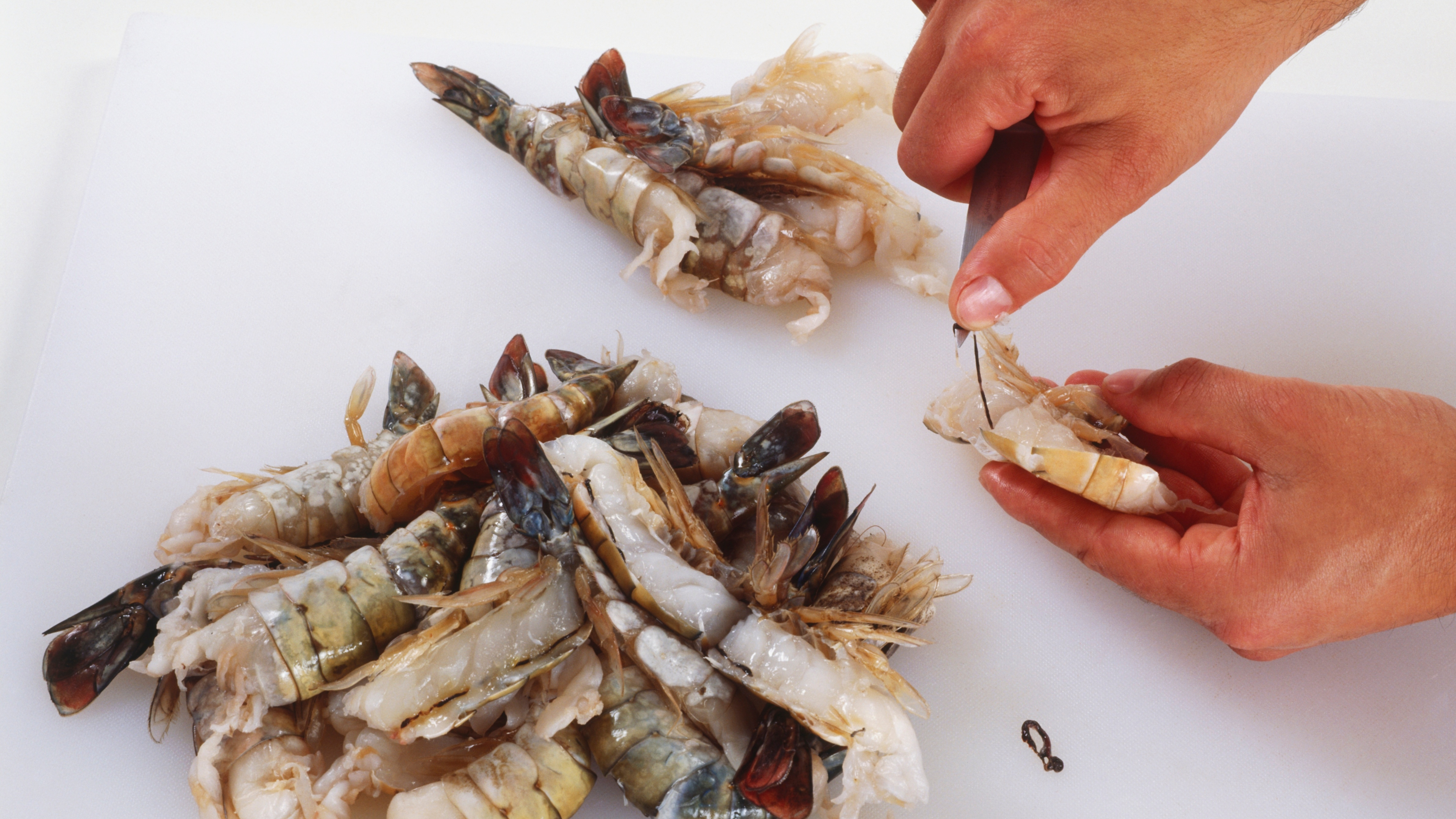Do I really Need To Devein Shrimp?
I am proficient at many kitchen tasks, but I suck at deveining shrimp. It takes me forever; my hands get wet and covered in shrimp slime; it is just generally unpleasant. (I may have referred to it as "the bane of my existence.") Deveined shrimp exist, but they're more expensive at my store. Which got me thinking: Given the effort-to-yield ratio, do I really need to devein the shrimp at all?
The idea of not deveining them sounds, at first, gross. "Vein" is just a smart euphemism—good work, shrimp-marketing people—for the shrimp's lower digestive tract, meaning the vein is filled with, ahem, waste. So yes, it seems preferable to remove this with a small paring knife, but would it kill me if I didn't?
"It's not gonna kill you, but it's going to be a little grainy, maybe," says Chris Bray, manager of Dirk's Fish seafood store in Chicago. "It's an aesthetic thing. And it's not gonna taste great."
Bray points out that if you're paying for quality shrimp, you want it to taste as good as it possibly can, which involves removing the vein. But no, it won't hurt you if you leave it in.
"If you cook it with the vein in, it'll be encapsulated in the shrimp, so it can be off-putting," he says. "Any kind of graininess in seafood drives me crazy."
Other experts I talked to say you might not be able to taste the vein depending on the shrimp's size. Lynsee Fowler, communications manager for the trade group National Fisheries Institute, tells me that leaving the veins in shrimp may impart a slightly gritty taste, but not always.
"If you want to eat non-frozen shrimp but don't want to devein them, consider choosing small or medium shrimp which tend to have a smaller, less noticeable vein," she advises.
If you're less finicky about your shellfish, the vein might not bother you at all. Zachary Ranard, a Cincinnati-based shrimp importer, says if he's cooking just for himself, he'll rarely bother deveining shrimp.
"Because shrimp are bottom-feeders, it's going to give a little more muddy taste, you could say, like catfish kind of have," he says. "But to the layman, and especially if you put the shrimp in pasta or something, you're 100 percent not going to taste it. But when I tell people 'Eat the vein. It doesn't matter,' people look at me like 'What the hell?'"
Ranard points out that many shrimp farmers are trying to minimize the vein's presence before the shrimp is even packaged. He says some farmers will stop feeding the shrimp a bit before the shellfish are harvested so they'll be more likely to clear their digestive tracts. When it comes to wild-caught shrimp, that's not possible, so those tend to have a more prominent vein. If you're excited when you finally find a brand of shrimp that has clean veins, though, don't expect that to be consistent.
"There's hundreds of shrimp packers and thousands of farmers, so even if you buy a specific brand of shrimp every time, that doesn't mean the shrimp's coming from the same farmer every time," he says.
Bottom line, seafood-industry associations including The Texas Shrimp Marketing Program agree that deveining isn't a mandatory step when preparing the shellfish: "Whether or not to devein shrimp is a matter of personal preference. In general, small and medium shrimp do not need deveining except for cosmetic purposes."
Bottom line for these bottom feeders: With large prawns, deveining is something you should consider. With smaller shrimp, you probably won't even notice the vein, but if you favor peace of mind, then go for it. It's mostly psychological: Is the work of deveining the shrimp or the expense of buying deveined shrimp worth it to not think about eating shrimp poo? Having thought about shrimp poo for far too long this week, I think the answer is an emphatic yes, no matter how long the deveining takes me.
